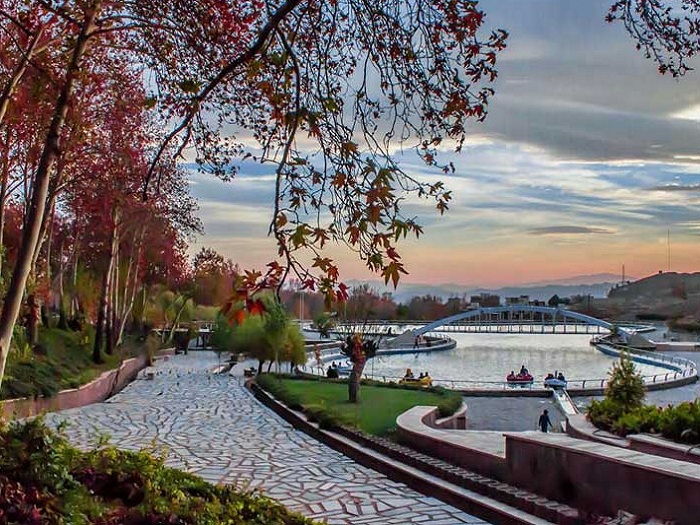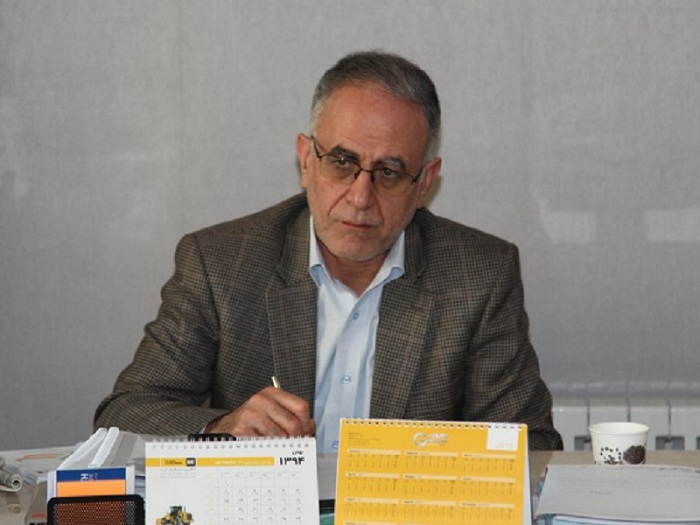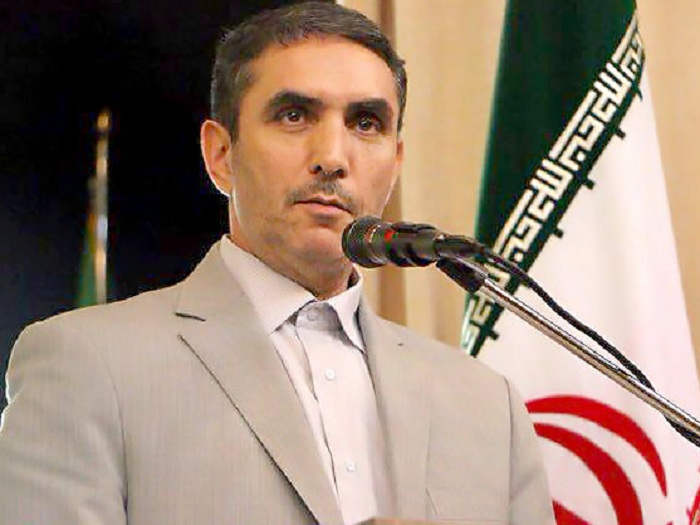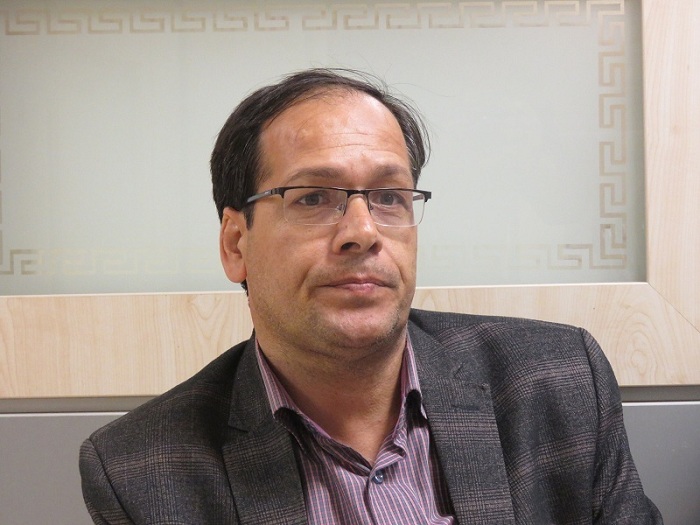Middle East travertine hub from production to export

Decorative stone is an economic advantage in Mahallat city of Markazi province, the lifeblood of which lies in marketing and marketing, but now there are bottlenecks in the export of this mineral product that needs attention as the Achilles heel of this field.
According to the International Stone Exhibition of Iran, the largest travertine reserves in the Middle East in Mahallat city is one of the functions of Markazi province. Christian, Tranix and Tramit (raw stone and travertine) have also been able to place Iran in the ninth place in the production of decorative stone among the eighteen countries producing travertine stone.
Throughout Iranian history and civilization, there are many artifacts and documents of huge columns, large stone arches that show the art and skill of the ancients in the skillful use of stone in the construction of buildings and statues and the existence of rich and rich reserves of stones. Decoration in Iran is also a blessing that should be used properly and effectively in the economic field.
There are eight thousand and eight hundred mines of non-ferrous metals, industrial soils and facade and building stones in the country, one thousand nine hundred of which are in the field of decorative stones.
The known capacity of the country's mines is estimated at forty-seven billion tons, of which four billion tons are related to the reserves of decorative stones, and the actual consumption of stone in the country is seven and a half million tons, given the ups and downs of construction and mining capacity. Annually it is more than twenty-five million tons.
Existence of rich reserves of stone and decorative facades has made Iran one of the top four producers of stone in the world and due to Iran's strategic position, there is a privileged situation for this valuable mineral product in the target markets of the region, which should be in the shadow of targeted program. Used properly.
A look at the situation of strong competitors in the export of raw and processed stone such as Turkey, India, Italy and China shows that despite the long history and pioneering title in this field, our country is facing problems due to the sale of raw materials in the field of stone industry.
Activists in the stone industry believe that the uncontrolled export of raw stone is the biggest obstacle to the quantitative and qualitative growth of this mineral field and the growing trend of extraction and production costs in this field such as rising labor wages and high customs and banking costs along with sanctions from One of the important factors is the slow growth of stone exports in the country.
They believe that inadequate methods of extracting decorative stone and the lack of adequate training of workers active in this mining sector have led to a failure in quality and exports, and until this problem is resolved, economic growth for decorative stone can not be seen.
"Marketing in this area requires skinning, and the growth of crude stone exports is a proof of this, and perhaps one of the main reasons is that exporters are more looking for easy-to-enter markets to offer their goods with less effort, even." If this causes a lower profit margin for them.
Mahallat city with two million tons of travertine has two hundred and fifty stone processing units and the existence of one hundred and ten rich decorative stone mines in this region has created six thousand sustainable jobs in this field.
Weak technical knowledge, machinery and training of the three vertices of the problems of the Iranian stone industry

The secretary of the Iranian Stone Association stated: The country's stone industry is facing problems in engineering design, supply of appropriate machinery, management and training.
Ahmad Sharifi added: "One thousand mineral units out of the total two thousand existing units in the country are closed due to problems in the sales market, the imposition of government rights and the conflict with the accumulated losses."
He said: "The chain of the stone industry is key to the mine and two thousand industrial units in the field of stone with a capacity of twenty-seven million tons are active in the country, whose global value exceeds three billion dollars."
The secretary of the Iranian Stone Association continued: "Despite the country's ability in the field of national capital, mineral ore reserves can generate up to seven billion dollars in wealth from processing this product, but with a capacity of 27 million tons of active stone industries, now only ten million tons of stone in the country." it is produced.
Sharifi said: "Six million tons of processed stone is exported annually in the country, which, including one million tons of raw stone and cube export blocks in the collection of Iranian stone export statistics, reaches seven million tons."
He considered this amount of export as insignificant due to the high capability of the country in the national stone capital and added: there are six thousand processing units in the country that have a potential production and export capacity of five hundred units and one hundred and fifty export units.
The secretary of the Iranian Stone Association stated: The investment in each stone mine is estimated at seven billion rials, while the initial equipment of a stone mine requires forty billion rials of capital.
Unbalanced production and demand problems of the stone industry
In a previous interview with him, the chairman of the board of directors of the Iranian Stone Association stated: "Construction in the country has decreased by fifty-seven percent and has reduced the demand in the sluggish market of the stone industry."
Abolghasem Shafiei added: The best stone cutting units with equipment imported from Italy are active in the country, but they have faced a weak recession and now have warehouses of cut stones.
He continued by stating that the best technical knowledge and modern equipment is available in the field of stone processing: this sector has a serious problem in the field of skilled manpower and final stone processing.
The chairman of the board of directors of the Iranian Stone Association continued: The export of raw stone depends on the amount of mineral reserves, technological changes and the productivity of active units.
Shafiee, stating that there is sufficient stone reserves in the country, said: stone reserves reach four billion tons and the consumption of stone in the country is ten and a half million tons per year and one million tons of it is exported in blocks.
He said: "Absolute crude sales are not condemned and there is a need to consciously increase the share of productivity, changes in technology that are factors in decision-making in the field of stone."
Shafiei added: "Six hundred stone-cutting units have been equipped with advanced machinery since the previous governments using the facilities of the Foreign Exchange Reserve Fund. The average production capacity of these units is 200,000 square meters, while 10,000 square meters is not exported."
He said: "The main export of decorative stone and facade of Iran to the Iraqi market, which causes damage to the stone industry, because each meter of stone is offered in the Iraqi market for four to five hundred thousand rials, and this country imports weak and low-quality stones."
Shafiei said: "The stone association is 100% in favor of product processing, but a re-examination of the effects of stone processing can boost exports."
The head of the Iranian Stone Association said: the export of stone in 2009 reached nine hundred and forty thousand tons and after the imposition of seventy percent duties on the export of raw stone in 1389, the amount of raw stone exports decreased to five hundred and twenty thousand tons.
Stone marketing depends on the construction boom
The head of the Mining Commission of the Iranian Stone Association believes that the decrease in the amount of construction is one of the reasons for the sluggishness of the stone market.
Aziz Mirzaeian stated: The stagnation of the domestic consumer market, the lack of liquidity and the prolongation of the return on investment cycle have caused problems for the stone industry.
He added: "Only ten percent of the country's stone processing units are operating in a modern way, and the products of this small sector, if accompanied by a clear strategy and planning, will strengthen the competitive advantage to participate in global markets."
The head of the Mining Commission of the Iranian Stone Association stated: Reforming the processing units and injecting modern technology in order to increase the quality level of products and reduce costs is necessary to be present in the international arena of stone industry.
Mirzaeian emphasized: The prosperity of the stone industry requires expertise, allocation of financial resources, foreign marketing for products, and a colorful presence in international exhibitions.
300 units of stone is an important advantage for Markazi province

The central governor said: "Mere processing in the stone industry will not be a factor of economic prosperity in this field, because Italy, which is smaller than Iran, exports raw stone."
Seyed Ali Aghazadeh stated: There are three hundred stone factories in Mahallat city, but more than half of these units are not in good condition and should be given special support for growth.
He expressed the root of the problems of stone units in the recession of the construction industry, lack of attention and effective activity in the export-oriented market.
The central governor said the country's share of global stone trade should increase because the industry could replace other exports and create a currency.
Aghazadeh emphasized: Activists and organizations in the field of stone should pay attention to marketing and facilitate the export route, because Iran is among the top producers of stone in the world, but has not been able to find its place well.
Referring to the activities of the Provincial Mines Council, he said: "This institution, with its powers, can give double prosperity to the stone field."
The central governor said: this province is among the global brands in stone and its sub-industries and the cities of Mahallat and Nimvar are unique due to their travertine stone.
Complete the stone production cycle
The representative of the people of Mahallat and Delijan in the House of Nation stated: Incomplete stone production cycle, weakness in exports and high production costs are the most important problems of stone production in the country that should be eliminated with the purposeful support of the government and the Islamic Consultative Assembly.
Hojjatoleslam "Alireza Salimi" added: "The technical knowledge used in Iran's stone processing units needs peeling, which needs to be eliminated by paying cheap facilities."
He continued: "Eighty percent of the country's stone products are consumed domestically, and a change in attitude is necessary to capture international markets."
The representative of the people of Mahallat and Delijan in the House of Nation said: the active cooperation of the economic sphere of the embassies will cause the dynamics of exports and the acquisition of the share of the global markets.
He added: "Economic experts of the Ministry of Foreign Affairs and embassies should convey world information and market needs to the country's stone industry activists and define the consumer market in accordance with world needs and strengthen export work."
Salimi stated: Granting facilities at high rates to miners and processing units will prevent the supply of gauges at reasonable prices and reduce competitiveness.
Export of 400,000 square meters of stone facades from neighborhoods

The head of industry, mining and trade of Mahallat city said: four hundred thousand square meters of stone facade and processed were exported from Mahallat city abroad in the first nine months of last year.
Reza Maleki stated that the currency obtained from the export of this amount of stone from Mahallat city is four million dollars and added: these export shipments are mostly sent to Afghanistan, Qatar, Pakistan, Myanmar, Romania, Kazakhstan, Iraq and Russia.
He added: "Ten to fifteen percent of the country's facade stone, which is mainly travertine, is extracted and processed from the mines of Mahallat city, which is unique in terms of quality and quality."
The head of industry, mining and trade of Mahallat city stated: this city has one hundred and fifteen mines as the center of stone production in the country, of which sixty-two mines are active in the field of travertine production.
Maleki continued: Travertine stone of Mahallat city has quality, technical specifications and special characteristics that are different from stone of other parts of the country. For this reason, it was included in the world geographical registration of goods and this product was registered as travertine of Mahallat city of Iran.
He explained: "Global registration of a mineral or any other product, in addition to introducing more and increasing export capacity, also improves the added value of the product."
The head of the industry, mining and trade of the neighborhoods stated that the lack of marketing, marketing and tourism science is an important obstacle to the export of stone and the reason for selling raw stone.
* IRNA










